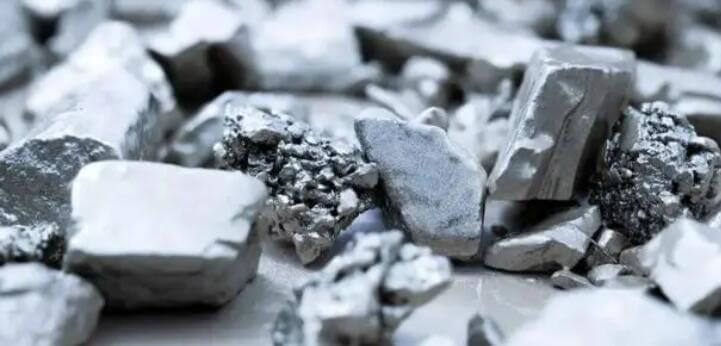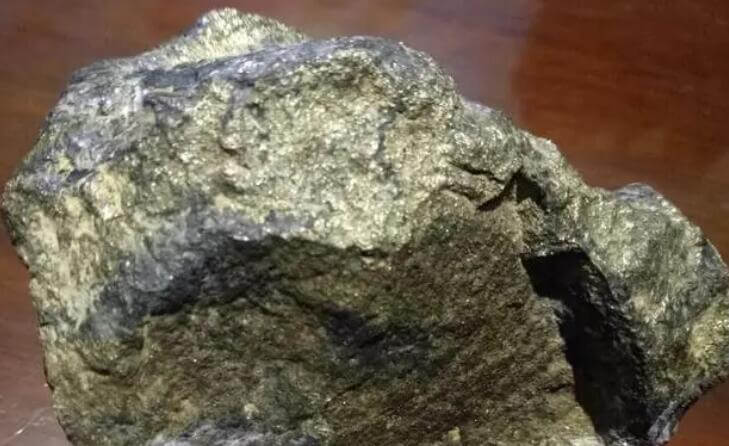Associated Silver Deposits
Associated silver deposits refer to geological formations where silver is found with other primary metals. Silver is often found as a byproduct or associated mineral within ore bodies that primarily contain metals such as lead, zinc, copper, gold, or other base metals. These deposits are called associated silver deposits because silver occurs alongside these main metal minerals.

For example, silver can be associated with lead-zinc deposits. Silver may be present in the same ore body when mining for lead or zinc. Similarly, silver can be associated with copper deposits or gold deposits. The presence of silver in these deposits is often economically significant, and the extraction of silver becomes feasible as a byproduct of mining these other metals.
The mining and processing of associated silver deposits involve specialized techniques to extract silver from the ore containing the primary metal. The methods can include flotation, leaching, and refining processes to separate and recover silver from the associated minerals.
The association of silver with other metals in deposits has implications for the mining industry, affecting the overall economics of mining operations. The exploration and extraction of these associated silver deposits contribute to the global production of silver as a valuable precious metal.
Lead, zinc, and copper-associated silver ores beneficiation is generally based on the primary metals’ process conditions and pharmaceutical systems. A single silver concentrate is not selected. Silver is usually enriched in lead, zinc, and copper concentrates. , and then recycled through smelting. However, during the smelting process, the silver in the lead concentrate enters the crude lead along with the main gold house; the silver in the copper concentrate enters the matte. The recovery process is simple, low cost, and has a high recovery rate. However, the silver in the zinc concentrate will enter the slag, whether it is a fire or wet process. The recovery process for the fuming method is complex, costly, and has a low recovery rate. Therefore, mineral processing should enrich silver in lead and copper concentrates.

Occurrence status and characteristics of silver minerals in lead-zinc-copper ores
Silver exists primarily in the form of individual silver minerals. Various compounds formed by silver and sulfur, copper, lead, tin, antimony, pounds, selenium, arsenic, and other elements appear in various mineral deposits. The common ones are chalcocite-spiral sulfurize, chalcocite-silverite, Deep red silver ore, brittle silver ore, light red silver ore, sulfur antimony copper silver ore, sulfur antimony lead-silver ore, stibnite lead-silver ore, pound silver ore, selenium silver ore, etc. A small amount of silver occurs in ores as elemental minerals, such as natural silver. A tiny amount of silver does not have an independent form in the ore but forms homogeneous images in the crystal lattice of other minerals, such as silver-gold ore, silver-black copper ore, etc. Silver occurs in various mineral forms in lead-zinc ore or copper-lead-zinc pyrite.
Silver minerals are closely symbiotic with sulfide minerals such as lead, zinc, copper, etc., and are mostly embedded in fine particles. The particle sizes are almost all below 0.04 mm. The particle size of most silver minerals is 0.04-0.02 mm, and the smallest ones are only 0.001 mm. Fine-grained silver minerals are distributed in galena, sphalerite, and copper sulfide minerals in the form of conjoined bodies, inclusions, and microscopic bodies. During the flotation process, those sulfide minerals closely related to silver minerals become their carriers, enriching silver into various concentrate products. Therefore, the occurrence state and embedded characteristics of silver minerals significantly impact the comprehensive recovery of silver.
Associated Silver Ore Beneficiation
Associated Silver Ore Beneficiation Methods
Silver-bearing ores are divided into two categories: silver-gold ores and lead-zinc-copper-associated silver ores, whose silver production accounts for more than 99% of the total output.
The beneficiation method of silver and gold ores mainly uses flotation or sailing. The main reason for choosing flotation or atmosphere is the composition of silver minerals. When the silver minerals are especially argyrodite and natural silver, both flotation and cyanidation can be used, but when the ore contains multiple dark red silver ores, When it comes to refractory minerals such as reddish silver ore, selenium silver ore, etc., flotation can only be used. There is a difference in the recovery rate between flotation and atmosphere treatment. Generally, the recovery rate of the atmosphere process is higher.
The recovery of lead-zinc-copper-associated silver ores, due to their complex mineral composition, different symbiotic relationships, embedding characteristics, and oxidation degrees, the sorting effects are also very different. But as far as mineral processing is concerned, flotation is a commonly used method. Generally speaking, the recovery rate of lead, zinc, copper, and associated silver ores is lower than that of silver and gold, generally between 50% and 70%.
Associated Silver Ore Beneficiation Processing
Crushing and Grinding
The initial step is to crush the ore into smaller particles and grind it into a fine powder. It increases the surface area of the ore, making it more amenable to subsequent processing.
Flotation
Flotation is a common method used in the beneficiation of associated silver ore. In this process, chemical reagents and air are introduced to create a froth that selectively separates silver-bearing minerals from other minerals in the ore. The froth containing silver is then collected.
Leaching
Leaching involves using chemical solutions to extract silver from the ore. Different leaching agents, such as cyanide, may dissolve the silver into the solution, leaving behind other non-precious metals and minerals.
Precipitation
After leaching, the silver in the solution can be precipitated by adding specific reagents or changing the conditions (e.g., pH). This results in forming silver compounds that can be separated from the solution.
Solvent Extraction
Solvent extraction may further purify the solution and selectively extract silver. It involves using organic solvents to transfer silver from the aqueous solution to an organic phase.
Electrowinning
Electrowinning is a method where an electric current is passed through a solution containing dissolved silver ions. It causes the silver ions to plate onto a cathode, forming pure silver metal.
Smelting
In some cases, smelting may be used to extract silver. It involves heating the ore to high temperatures, causing the silver to melt and separate from other minerals.
The specific beneficiation process can vary depending on the composition of the associated silver ore and the types of minerals present. Mining engineers and metallurgists need to tailor the beneficiation process to the characteristics of the ore deposit to maximize the efficiency and recovery of silver.
